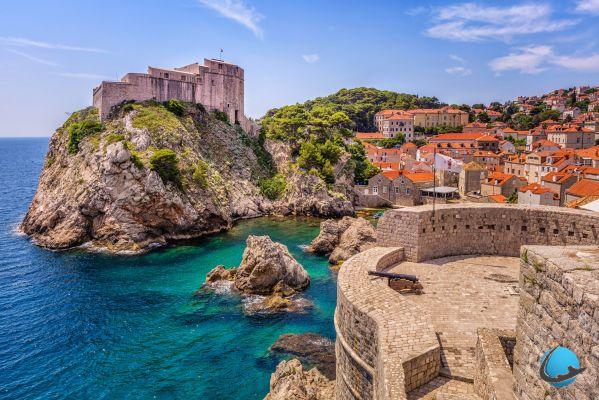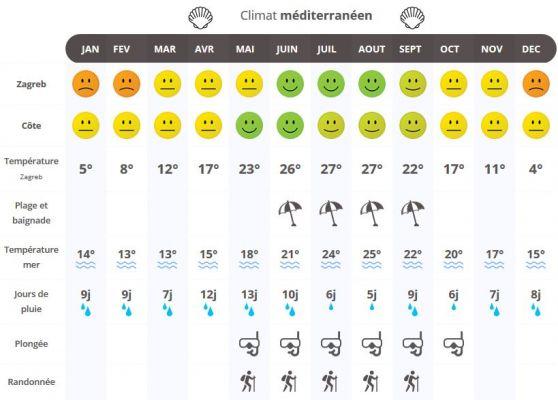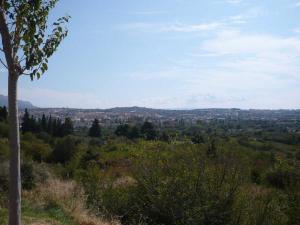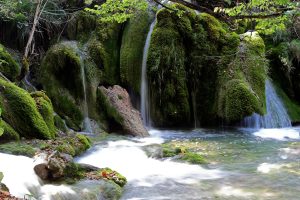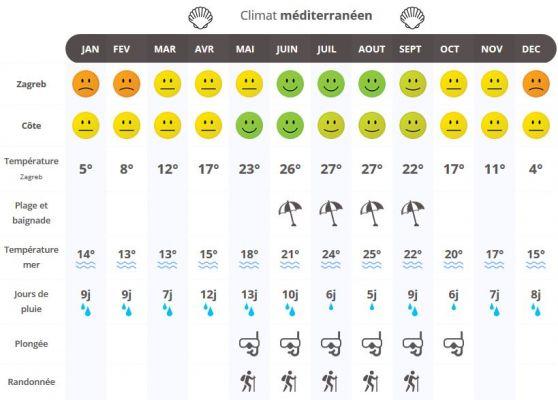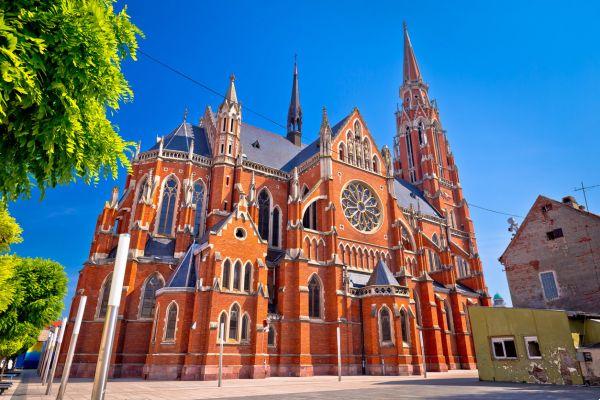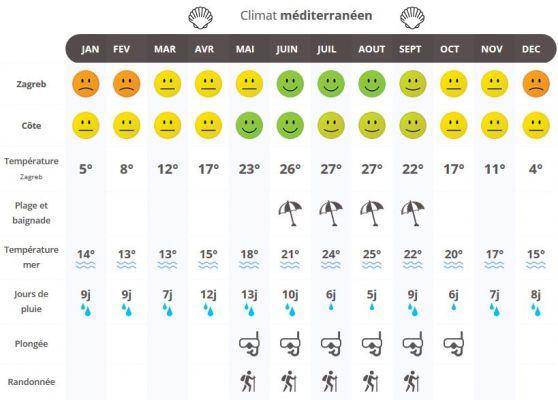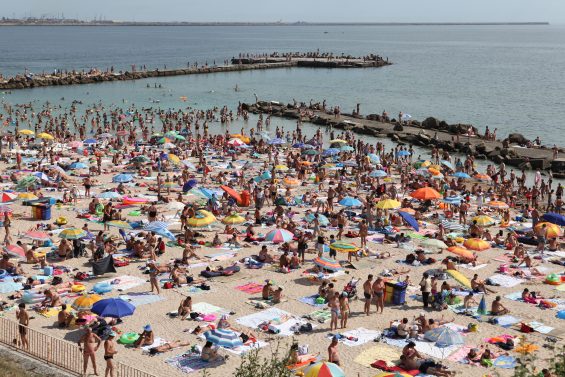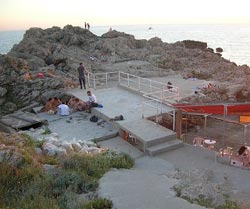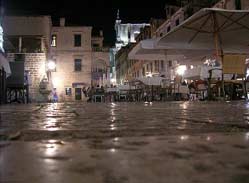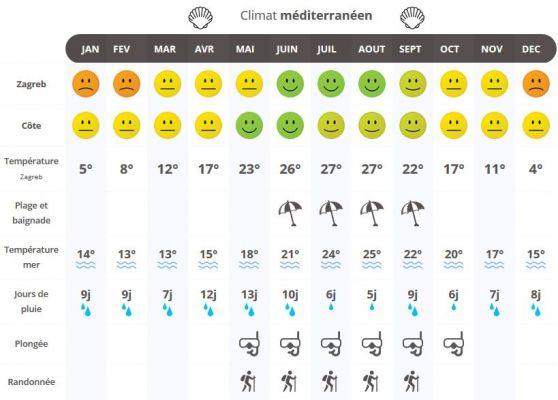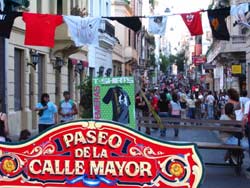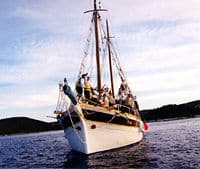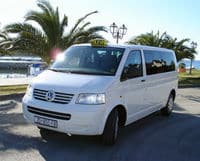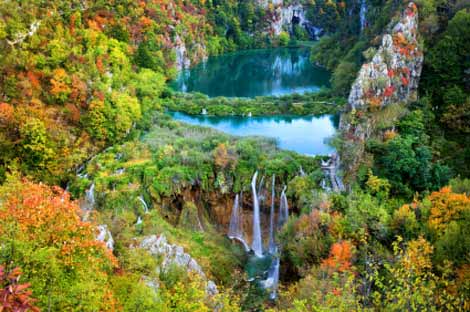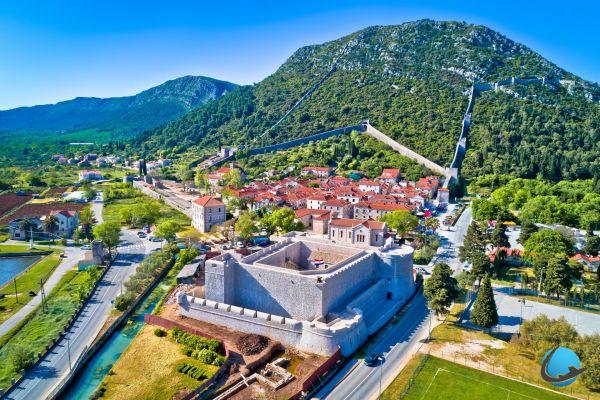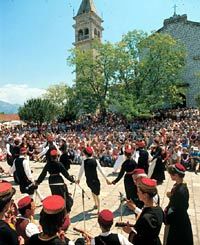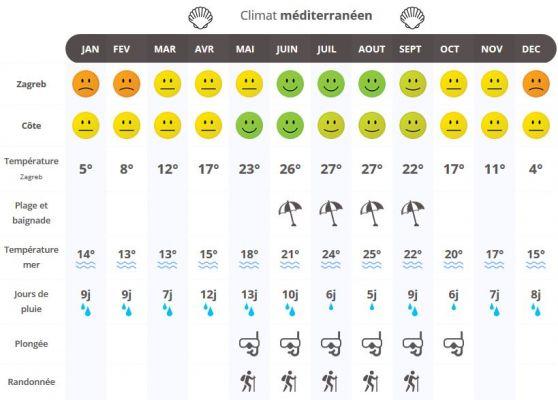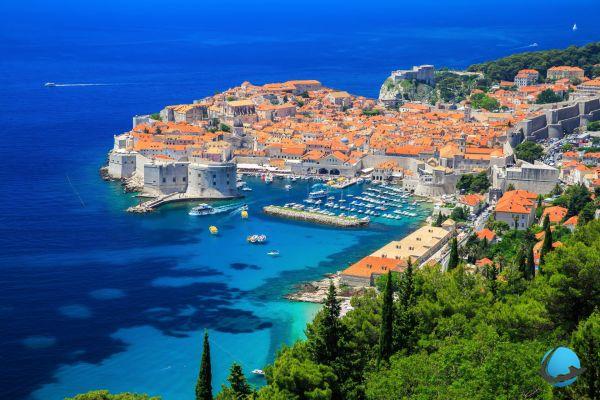
Blue sea, azure sky, cypress trees surrounding large estates, islands as far as the eye can see, lush vegetation, indolent yachts ... With its Riviera air, Croatia is on the rise! Here is our travel guide that will allow you to visit Croatia stress-free for an unforgettable vacation.
Why travel to Croatia?
A reunion for some, a revelation for others, the history of Croatia does not leave any of its visitors indifferent, on the contrary! Despite the conflicts of 1991-1995, the country has lost none of its prestige. Its geography, its cities and regions, its cosmopolitan influences and its dream setting… all make it a destination rich in a fantastic heritage, prestigious museums and numerous beaches. The largest province, Dalmatia, stretches along the coast. It is crowned by 1 islands!
Lovers of sea trips, rent a sailboat to discover some of the pearls of the Adriatic: Hvar, whose reputation has nothing to envy to its neighbors Capri and Mykonos, or the island of Mljet, very wild thanks to a program for the protection of flora and fauna. Surrounded by Aleppo pines, it hosts a majestic lake in the middle of which sits an unusual monastery: not to be missed!
In the lands, national parks are numerous. One can quote that of Plitvice, classified world heritage of UNESCO, which offers the enchanting spectacle of dozens of waterfalls in the heart of hundred-year-old forests. Further north, Velebit mountain is home to a variety of wildlife that will surprise nature lovers: bears, lynx, wild cats, chamois and mouflons share the territory… and the star!
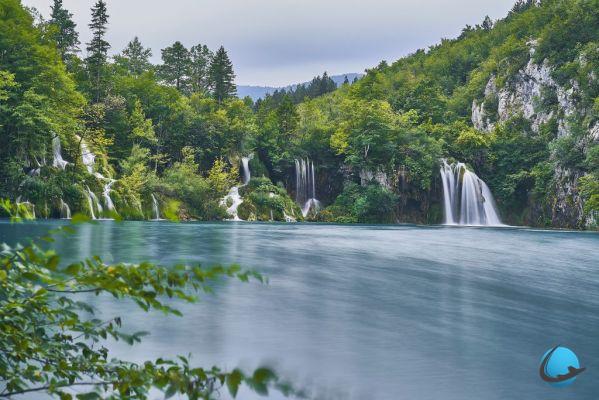 Plivitce National Park
Plivitce National Park
An exceptional cultural eclecticism
At the crossroads of multiple cultural crossroads, Croatia keeps the imprint of the Ottomans, Greeks, Egyptians, Romans, Venetians, Hungarians ... Hence the exceptional richness of its culture. Split, the palace city, is representative of this patchwork of civilizations. Zadar and Dubrovnik, two of the most famous coastal towns, offer unmissable festivals… Croatia allows you to practice all kinds of activities during your stay. Whether backpacker or sedentary, you just have to let yourself be seduced during your stay by the eclecticism of a country that aspires only to serenity!
More information about Croatian culture and history, also read this article.
When is the best time to visit Croatia?
Due to its geography, the country has two very different climates. You will therefore have to choose your itinerary and the season well to visit Croatia in the best conditions. Inland, the climate is continental with very cold and snowy winters and scorching summers marked by frequent thunderstorms. On the coast, the climate is Mediterranean : the winters are mild and sunny there, the summers very hot and dry with the sea temperature around 26 ° C, it is then the paradise of the chilly!
The wind is often present all over the country. It can be freezing in winter but welcome to the hot season. The best times to visit Croatia, without it being too crowded, are therefore the months of May and June, as well as September and October. The temperatures are then pleasant, you can swim in the sea and the prices are more affordable than in the high tourist season.
PRACTICAL TIPS : consult the climate trends for each month of the year.
What budget to plan on site?
The Croatian currency is the “kuna” which is divided into 100 “lipa” but the euro is very present everywhere in the country. Visiting Croatia is not particularly cheap, although the prices remain lower than those charged in France. In recent years Croatia has experienced a tourist boom that has drastically increased prices, especially in the hotel industry. Prices are very different depending on the season, with a peak during the high tourist season (July and August). The capital, large cities and some islands are also more expensive than the rest of the country.
Here are some examples of budget to plan on site for a week, excluding flights, per person:
- En low season (winter) count around 400 €
- En average season (in autumn and spring), plan around € 500
- En high season (summer), the budget will be between 600 and 650 €
The hotel business will be a major expense with double rooms between 50 and 100 €, depending on the season and the category. Note that most guesthouses and hotels charge a 20 or 30% supplement if your stay is less than 3 nights on site. Catering is cheaper: you can easily eat on the go if your budget is tight. In addition, the often very generous dishes can be shared, especially if you are traveling with children.
How to get to Croatia from France?
The easiest and fastest way to visit Croatia is by plane, with a flight time of around 2 hours. The country has several international airports: Zagreb, Split / Trogir, Dubrovnik, Pula, Rijeka, Zadar and Osijek. Many companies serve the country, in particular the low-cost companies. It is therefore easy to find flights at very reasonable prices: ideal for a short stay!
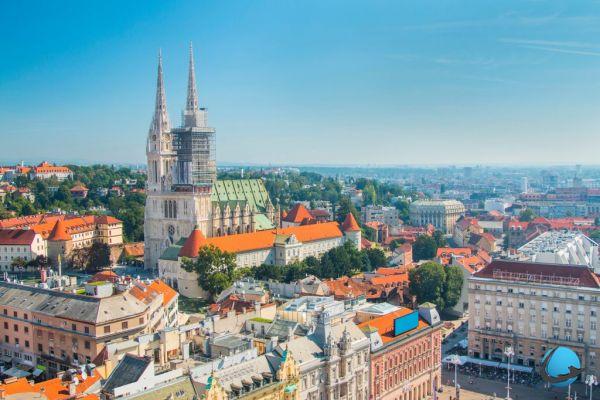 Zagreb
Zagreb
If you have more time, you can reach Croatia by car. The road will then take you through Italy and Slovenia, or even Switzerland if you live in the northern part of France. Note that the border crossing can be quite long, with impressive queues in the height of summer. To travel on site, your national license is sufficient and the road network is of good quality, even if the driving of the Croatians is quite sporty! If you live in the south, it may be worthwhile to reach Croatia by boat from Italy, starting from Venice or Ancona. You will then gain many hours of driving.
How to get around on site?
There are different ways of getting around Croatia. It is always good to know some local peculiarities:
By car
If you have decided to explore Croatia by car, there are several things you should know about that will help you avoid trouble with the local authorities. First of all, the speed limits are slightly different from ours: driving in built-up areas is limited to 50 and highway speed to 130 km / h. In contrast, attention on roads outside the built-up area: you must not exceed 80 km / h. Likewise, always think of leave your codes on: it is compulsory in Croatia, and in any case, you will be spotted much better, in particular on the winding roads of the mountains. You can also easily hire a vehicle from France which will be waiting for you at the airport.
Most bus
It is the most developed public transport network in Croatia. A number of buses serve small towns, which will allow you to deepen your visit beyond just the main towns, all at reasonable prices and in a certain comfort.
By train and boat
The railway network is well developed in Croatia. However, the speeds are far from excessive. An advantage despite everything: the rail lines allow you to travel to neighboring countries, such as Austria or Italy. The latter country can also be easily reached by numerous maritime shuttles along the Dalmatian coast.
What to eat and drink in Croatia?
Visiting Croatia also means having interesting gastronomic experiences. The country has undergone various influences from neighboring countries over the centuries, including Austro-Hungarian, Ottoman and Mediterranean, which can be found in the local cuisine. Meat is very popular here, often grilled on skewers or breaded. On the Mediterranean coast and on the islands, fish is in the spotlight even if it is quite expensive. It is generally cooked grilled, stewed or gregada (a kind of bouillabaisse). Croatians are also fans of Grilled, fried, stuffed or integrated squid in a risotto. Shrimp and other seafood are also a must.
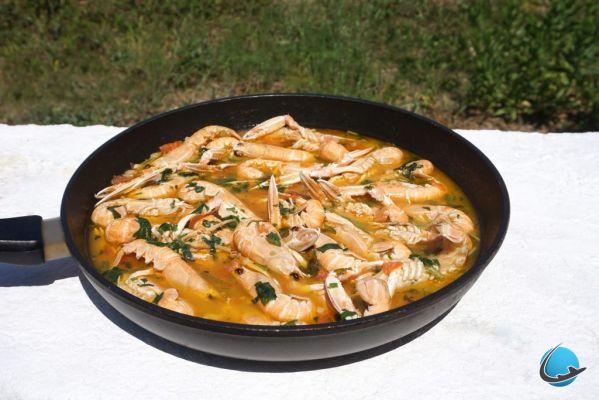 Shrimp Stew
Shrimp Stew
Vegetables and condiments accompany most dishes, and you will usually find all kinds of cheeses on the menu. As for desserts, gourmets will be in heaven: cakes and pastries are very popular in Croatia, just like ice cream. In the most touristic regions, restaurants often charge for bread and cutlery, it is indeed quite common in this region of Europe. In keeping with Mediterranean traditions, Croatians love to spend time on outdoor cafes.
Plus, if you're lucky enough to be invited to a local, you'll always be offered something to drink when you arrive. Coffee is widely consumed, especially “Turkish” and you can drink tea, usually fruity. Regarding alcohol, Croatia produces wine in most of its regions. The reds are often quite full-bodied and you will easily find white and rosé. Note that Croats are used to cut their red wine with still or sparkling water, do not be offended! On a hot summer day, you can also taste the local beers, refreshing to perfection.
In which region to sleep in Croatia?
Due to its very stretched geography along the coast, journeys on the coastal road can be very long. If you are going to visit Croatia by plane, carefully select your arrival and departure airport before building your itinerary and rent a car for complete autonomy.
For a stay of one week, the best is to make a circuit from the following cities:
- Dubrovnik : visit the “Pearl of the Adriatic” before taking a trip to Kotor, Montenegro, a splendid city, in a beautiful setting. On your return to Dubrovnik, take the boat to discover the island of Mljet where nature, relaxation and swimming will be at the rendezvous. You can then reach the mainland at Orebić and then reach the beautiful island of Korčula before returning to Dubrovnik.
- Split : Stroll through its preserved historic center and explore the Marjan peninsula, where you can swim. Then go and visit one of the most beautiful islands in Croatia: Hvar, 2 hours by boat. Back in Split you can take the road north, passing Trogir, Šibenik and Krka National Park where you can find beautiful lakes and waterfalls. Before heading to Split, stop at Murter for a day trip to the Kornati Islands.
- Zadar : its old town deserves several walks along the alleys. Walkers will continue their trek through Paklenica National Park and then Plitvice Lakes National Park. Breathtaking stages in the heart of nature! After the effort, the comfort: direction the island of Rab and its postcard beaches, before making a stop in Pag. Departing from Zadar, you can also visit the Kornati Islands.
- Zagreb: its town center is pleasant for a stroll before setting off to explore the coast. On the road, stop in Opatija, Pula, Rovinj or even Poreč, charming villages which conceal historical treasures not to be missed.
READ ALSO :
Where to go in Croatia: which city and which region to choose?
What are the main monuments to see in Croatia?
To visit Croatia is to take a trip through the history of Europe. Depending on the regions and cities, you can be transported to different times or believe you are in a neighboring country like Italy, Greece or Turkey. Croatia also has many Gallo-Roman remains. To plan your Croatian trip, do not hesitate to consult our article on the 15 essential visits of the country. Among the main places of interest, note the Palace of the emperor Diocletian in Split, the Roman remains of Pula or the imposing Austro-Hungarian constructions of Zagreb.
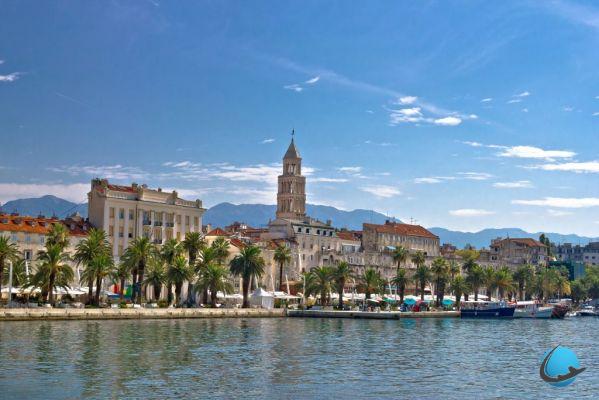 View of the Diocletian Palace in Split
View of the Diocletian Palace in Split
What are the most beautiful natural places to visit in Croatia?
Visiting Croatia will introduce you to an incredible variety of landscapes. With its postcard beaches and dreamy islands, lovers of idleness and relaxation will be in paradise! Surprisingly clear, the Adriatic Sea is a perfect place to learn about diving or snorkeling. If you are on the move, the country's 8 national parks will offer you a wide choice of hikes: from short walks, to sporty mountain walks. You can also do plenty of outdoor activities inland, such as kayaking or rock climbing.
What to bring back as souvenirs from Croatia?
In Croatia there are many specialties. Here are some essential memories to offer to your loved ones or to yourself during your shopping sessions!
Croatia: country of the tie!
For shopaholics, this is the souvenir to bring back from Croatia, because it is in this country that this accessory was born. In the XNUMXth and XNUMXth centuries, it was a scarf worn by soldiers. The success was immediate… in France, which adopted it very quickly! Today, in Croatia, you can find silk, and handmade.
Maraschino
Made from sour cherries, this liqueur will remind you of the sweet memory of Croatia, its scents and its warmth. Napoleon still remembers it, who celebrated his victories with a lot of this drink. Besides, the English were not the last to play this game!
Morcic
The tie for Monsieur, the jewel for Madame! In the Kvarner region, treat your partner and give him these typical, traditional earrings, which have long been a reminder of the victory against the Turks in the XNUMXth century.
Pag lace
On the island of Pag, many shops offer typical lace from the region. You will see them especially made on the street, by Croatian women. From this island you can also bring back cheese.
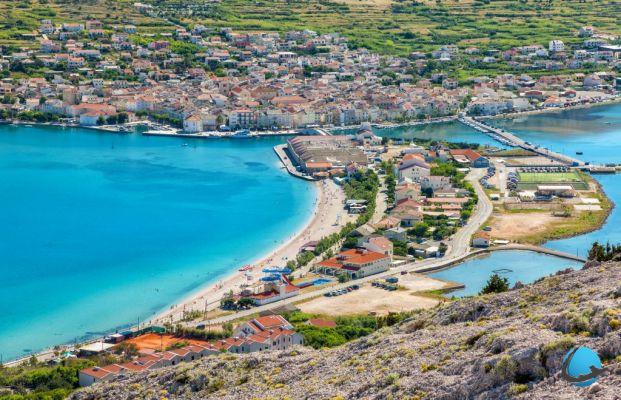 Pag Island
Pag Island
Useful information
Finally, here is our practical information, which will help you plan your stay:
- Formalities: To enter the country, a simple identity card or passport is sufficient. The same is true if you make a jump to Bosnia or Montenegro.
- health: Visiting Croatia will not pose any particular problems from a health point of view, but still take a European health insurance card.
- Tourist Office : Before leaving, visit the official website of the Tourist Office in Croatia to organize your stay as well as possible.
- Even if local transport is efficient, the ideal is to rent a car on the spot.
- If you are going to Croatia with your own vehicle, consider check that your insurance covers this country.
Discover the sweetness of Croatian life!
Are you planning a trip to Croatia soon? Share your preparations with us in the comments!




